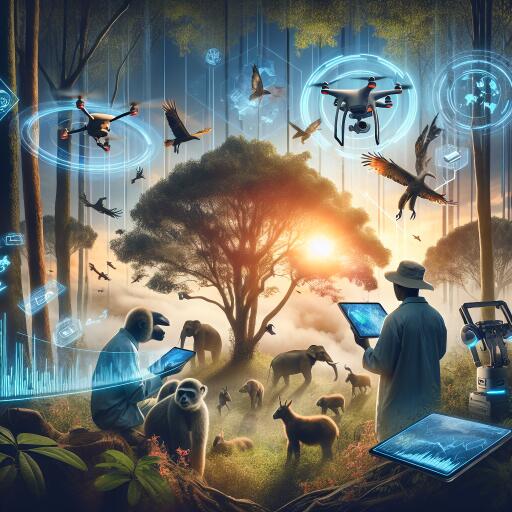
Digital Innovation in Wildlife Conservation
On the 3rd of March every year, the world unites to celebrate World Wildlife Day, a pivotal occasion designed to elevate awareness about wildlife conservation issues, mobilize political support, and honor humanity’s achievements in preserving our planet’s natural heritage. This year’s celebration, under the theme “Connecting People and Planet: Exploring Digital Innovations in Wildlife Conservation,” shines a light on the transformative power of technology in safeguarding biodiversity.
As society advances, so does our approach to wildlife conservation. The digital era is upon us, bringing with it innovative tools and methodologies that are reshaping our interaction with nature. These advancements, including Artificial Intelligence (AI), remote sensing technologies, and AI-driven security measures, are significantly contributing to the protection and preservation of our planet’s biodiversity.
Revolutionizing Research and Monitoring
One of the most notable impacts of digital innovation lies within research and monitoring. Cutting-edge technologies like satellites and drones are pivotal in tracking changes in habitats, monitoring wildlife populations, and detecting illegal activities such as logging. The precision and breadth of data collected through these means are invaluable to conservation efforts, enabling real-time responses to various environmental threats.
Further enhancing these efforts is the integration of camera traps, which quietly document the existence and behavior of some of the world’s most elusive creatures. These devices, equipped with motion sensors and GPS, have become indispensable in gathering insights without disturbing the natural behaviors of wildlife. This information is critical in developing effective conservation strategies and managing protected areas.
Artificial Intelligence: A Game Changer
AI and machine learning algorithms represent another technological breakthrough. These innovations excel at processing and analyzing vast amounts of data, unveiling patterns and trends that were previously indiscernible. For conservationists, this means a more nuanced understanding of animal movements, habitat requirements, and the dynamics of human-wildlife interactions, enabling more targeted and effective conservation plans.
AI is not only revolutionizing data analysis but is also at the forefront of tackling wildlife trafficking. Sophisticated image recognition systems are now capable of identifying wildlife products in online marketplaces, assisting law enforcement in cracking down on illegal trade and saving countless species from exploitation.
Engaging Local Communities and Youth
Digital platforms and mobile applications play a crucial role in involving communities, especially younger generations, in conservation activities. Tools like eBird, Merlin, and iNaturalist facilitate citizen science by allowing individuals to document wildlife sightings, engage in research projects, and access a wealth of educational resources. These initiatives foster a connection with nature and encourage collective action towards its preservation.
The Impact of Digital Innovation in India
In India, the embrace of digital innovation is evident in the diverse array of technologies deployed across the country for wildlife monitoring and protection. From drones scanning vast landscapes to advanced tracking systems and AI-driven solutions, conservationists are equipped with the tools needed to make significant strides in biodiversity preservation. These technologies facilitate everything from genetic research to real-time collaboration across continents, underscoring the importance of digital innovations in contemporary conservation practices.
Recognizing the critical role of technology, initiatives in regions such as Jammu & Kashmir and Ladakh employ advanced tools for monitoring wildlife, including the elusive snow leopard. Furthermore, applications developed specifically for the Indian context, such as the “Bagheera” for monitoring vehicle speeds, and the “Garuda App” for providing real-time alerts via CCTV connections, highlight the innovative approaches being taken to reduce human-animal conflicts.
Looking Towards a Sustainable Future
The fusion of digital innovation with wildlife conservation keeps opening new doors to safeguarding our planet’s biodiversity. It paves the way for groundbreaking solutions to some of the most pressing conservation challenges of our time. As we move forward, it is imperative to continue fostering collaborations across various fields and embracing new technologies to ensure a harmonious coexistence between humans and wildlife.
In celebrating World Wildlife Day, we are reminded of the crucial junction at which technology and traditional conservation methods meet. By leveraging digital innovations, we empower ourselves to protect the natural world more effectively, ensuring its preservation for generations to come.





Leave a Reply